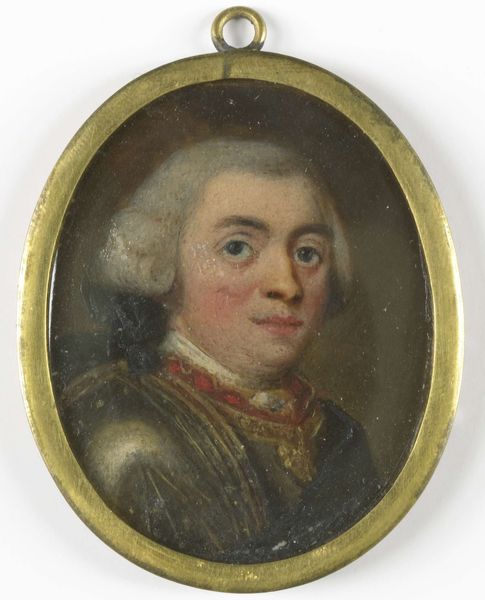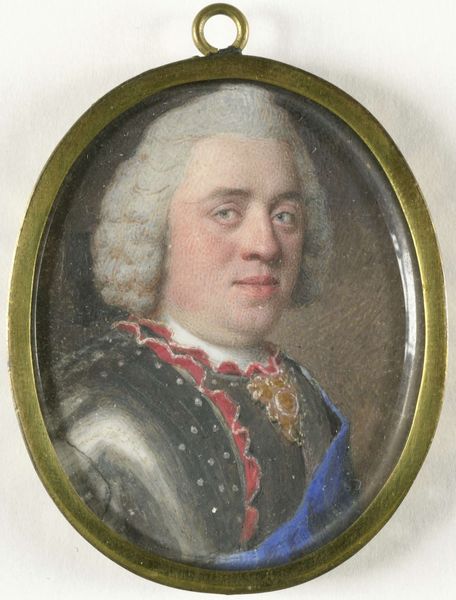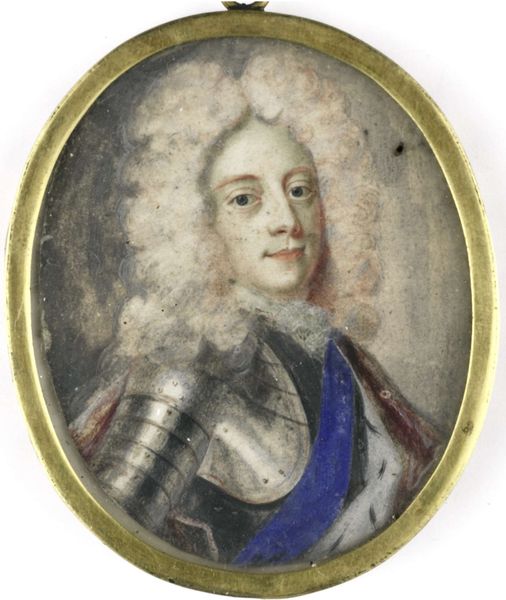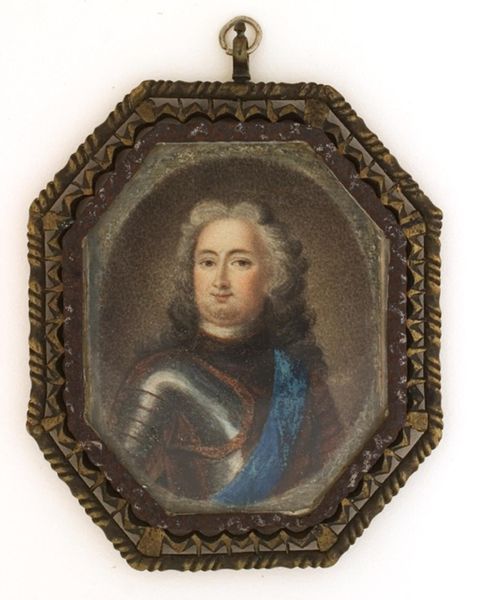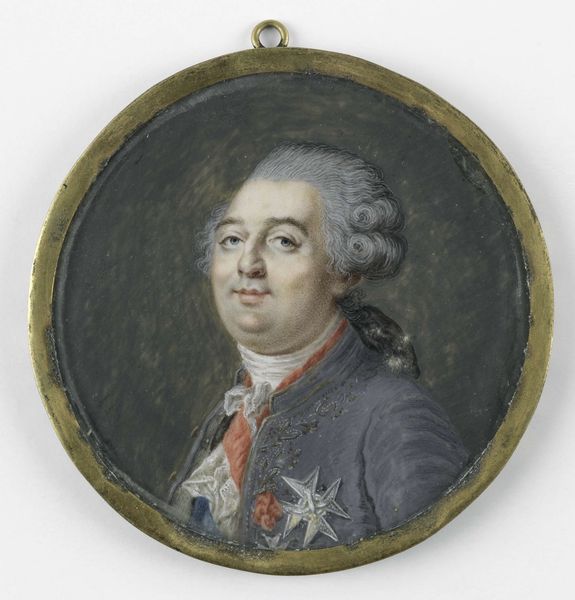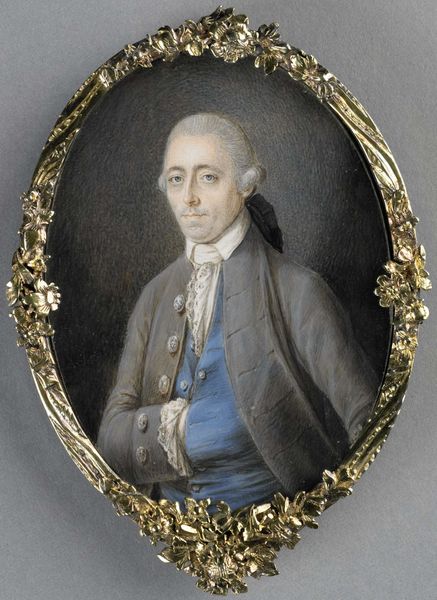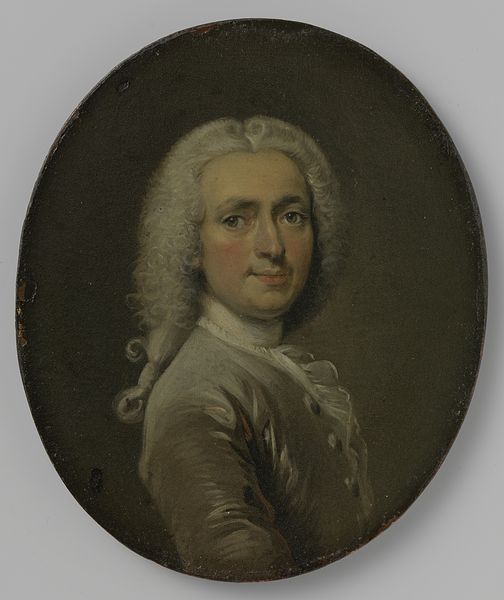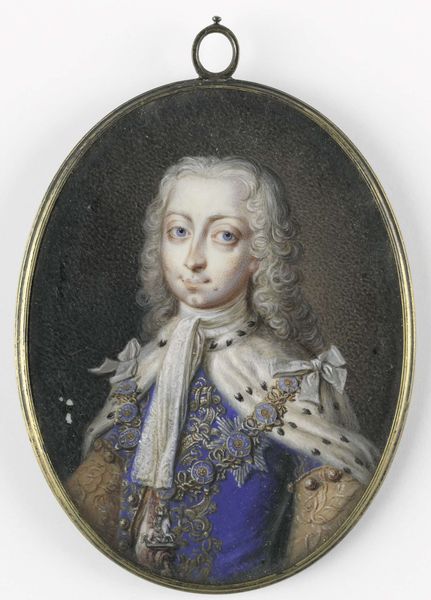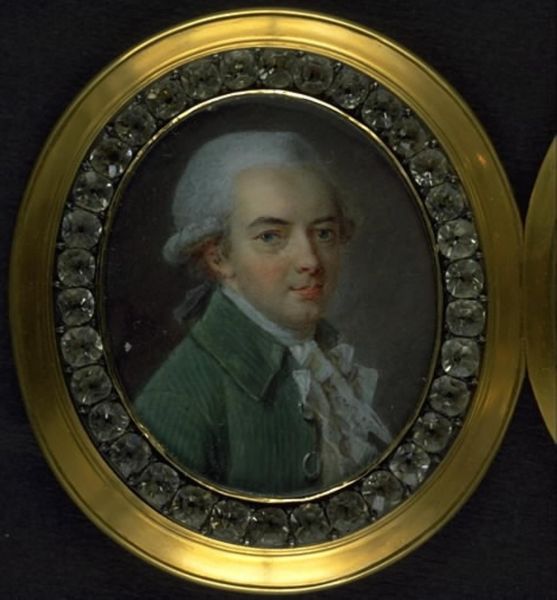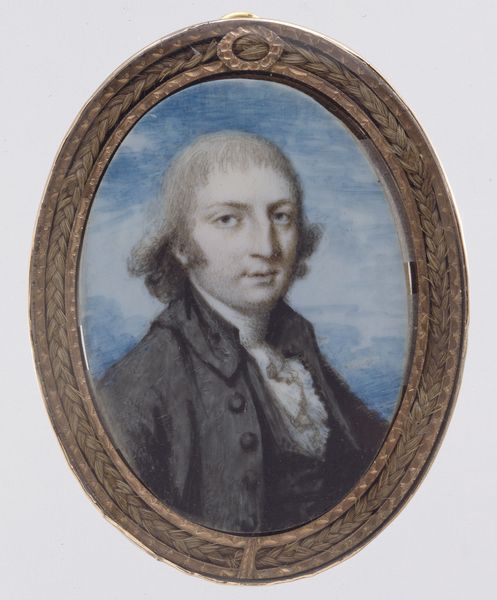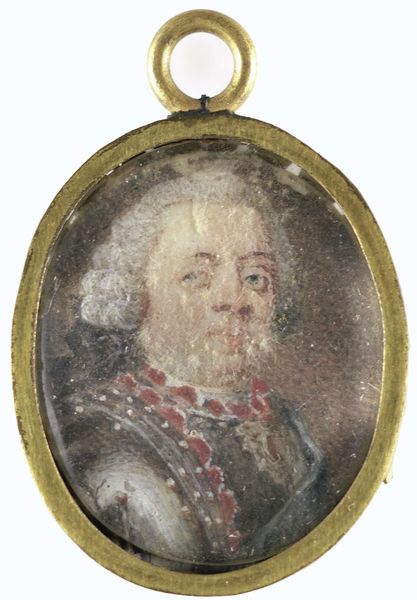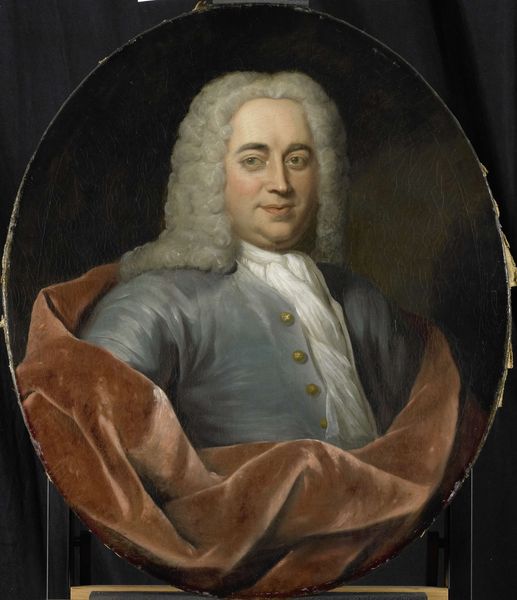
watercolor
#
portrait
#
still-life-photography
#
sculpture
#
watercolor
#
watercolour illustration
#
history-painting
#
miniature
#
rococo
Dimensions: height 4.7 cm, width 3.8 cm, height 5.6 cm, width 4.1 cm, depth 0.4 cm
Copyright: Rijks Museum: Open Domain
Curator: Let's turn our attention to this intriguing miniature, identified as "Willem IV (1711-51), prins van Oranje-Nassau." It is a watercolor piece, its creation dating roughly from 1745 to 1772, crafted by Gerrit Kamphuysen. Editor: My first impression is its intimacy. It’s a tiny portal into a past world, framed within that golden locket. The subject, Prince Willem, appears almost delicate, despite the armor. There is a vulnerability to this portrayal of power. Curator: Exactly. Miniature portraits like this were intensely personal objects. Often worn as jewelry, they functioned as keepsakes or symbols of allegiance and status. Consider the context—Willem IV was a pivotal figure, becoming the first hereditary Stadtholder of all seven provinces of the Dutch Republic. Editor: It’s interesting how that political power is both asserted and softened. The armor speaks to his role as a leader, of course, but the watercolor medium, the rococo style with its inherent grace, renders him approachable. Do you see how this tension also echoes his problematic lineage? Curator: Elaborate on that. Editor: Willem's position wasn't purely meritocratic. It highlights the complexities of inherited power. His image, displayed through a portable trinket, normalizes an inherited monarchy, which is definitely a complicated claim for leadership. Curator: A valid observation. These types of images worked very specifically, using symbolic language to secure social order. The fine detail emphasizes not just his position, but also a certain cultural refinement—connecting status to knowledge, fashion, taste... and dynastic entitlement, as you highlighted. Editor: Looking closer, the artist also included the soft fall of fabric as a foil to the rigidity of the armor, but more than anything it romanticizes authority, presenting him as both powerful and genteel. The overall aesthetic downplays some of the potential downsides of political inheritance. Curator: The soft colour palette typical of the Rococo aesthetic is also interesting here because these colours became trendy due to figures like Willem, so, we are faced with an example of someone influencing a trend they’re already actively embodying. These paintings created a demand by the upper class and created cultural identity, further reifying their wealth. Editor: Considering that historical reverberation— the impact these images would have on public opinion and the entrenchment of socio-political structures... I think it offers much food for thought regarding representation and power today. Curator: Indeed. Analyzing art through a historical lens shows that images can influence the course of societies through taste, trends and ideas that subtly shape perception.
Comments
No comments
Be the first to comment and join the conversation on the ultimate creative platform.
